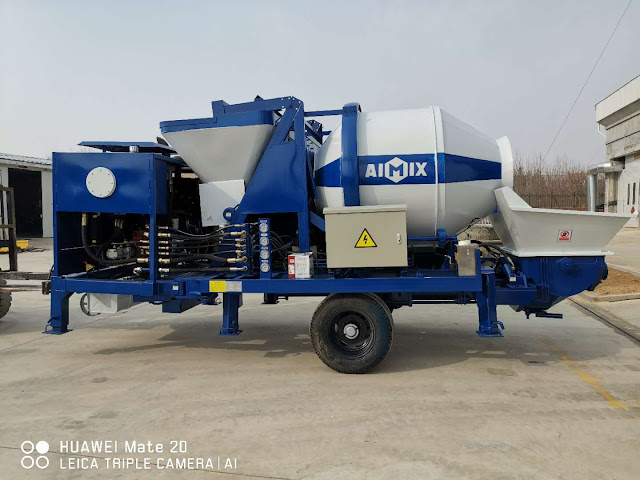How Many Types of Concrete Can Be Produced by Self-Loading Concrete Mixers?
In the fast-paced construction industry, adaptability is everything. One machine that exemplifies this principle is the self-loading concrete mixer. Known for its versatility and ability to streamline operations on-site, this all-in-one unit can load, mix, transport, and discharge concrete without the need for additional equipment or labor. But beyond convenience, one of the most significant benefits of using a self-loading concrete mixer is its ability to produce different types of concrete mixtures, tailored to the needs of each project.
Whether you're building a residential foundation, laying rural roads, or working on municipal infrastructure, the flexibility in concrete mixing is a major advantage. So, how many types of concrete can a self-loading concrete mixer(autohormiguera) actually produce? The answer might surprise you.
The Role of a Self-Loading Concrete Mixer in Mix Customization
Unlike stationary batching plants that often cater to one type of mix at a time, a self-loading concrete mixer allows real-time adjustment of mix design on the job site. Operators can tweak water content, aggregate ratios, and admixtures right from the cabin or control panel. This level of customization is particularly valuable when working in remote areas or where mix requirements change frequently throughout the day.
A self-loading concrete mixer comes equipped with an onboard water system, aggregate hoppers, and sometimes even electronic weight sensors to ensure accurate and consistent batching. As a result, it becomes easy to shift between different concrete types without significant downtime or material waste.
Common Types of Concrete Produced by Self-Loading Mixers
Standard Ready-Mix Concrete
This is the most widely used type of concrete, composed of cement, water, sand, and coarse aggregates. It is suitable for general construction work such as residential buildings, walkways, and small foundations. Self-loading concrete mixers can produce this type of mix quickly and efficiently, especially for small-batch needs.
High-Strength Concrete
By adjusting the cement-to-water ratio and incorporating quality aggregates, the self-loading mixer(autohormigonera Colombia) can produce high-strength concrete used in structural elements like columns, beams, and bridges. Some models are equipped with advanced mixing systems that ensure thorough blending and consistency required for load-bearing structures.
Fiber-Reinforced Concrete
Fiber-reinforced concrete includes fibers such as steel, glass, or synthetic materials to improve tensile strength and reduce cracking. A self-loading concrete mixer can handle this mixture type with the right adjustments and material feeding process. It’s ideal for applications like industrial floors or pavements that require enhanced durability.
Lightweight Concrete
Self-loading mixers can also be used to produce lightweight concrete by incorporating lightweight aggregates such as pumice, perlite, or expanded clay. This type of concrete is used in non-load-bearing applications like thermal insulation layers, precast blocks, or roof screeds.
Pavement Concrete
For road construction, self-loading concrete mixers can produce pavement-grade mixes that require specific aggregate sizes and a lower slump. The ability to adjust the mix on-site makes the mixer ideal for rural or temporary road construction projects.
Dry Lean Concrete (DLC)
Often used as a sub-base for roads and pavements, dry lean concrete has low cement content and minimal water. Since the water and aggregate ratios can be adjusted on the spot, a self-loading concrete mixer is a great fit for producing DLC efficiently.
Flexibility for Special Mixes
Apart from the commonly used types, self-loading mixers can be used for specialty concretes like:
-
Self-compacting concrete: With the right admixtures, the mixer can create highly flowable concrete for formwork applications.
-
Colored concrete: Pigments can be added into the mixer for decorative purposes.
-
Shotcrete: While not typically used for direct shotcrete application, the mixer can still prepare the base mix before it's pumped for spraying.
Why Versatility Matters on Construction Sites
In today’s construction environment, efficiency and adaptability are more important than ever. Using a self-loading concrete mixer that can produce various types of concrete reduces dependence on multiple machines or frequent deliveries from batching plants. This is especially beneficial in:
-
Remote construction sites
-
Projects with multiple structural elements
-
Time-sensitive applications
The ability to produce different concrete mixes on-site not only speeds up the workflow but also allows for better quality control and reduced material waste.
Conclusion
A self-loading concrete mixer is more than just a mobile mixing unit—it's a flexible, cost-effective solution for a wide variety of concrete production needs. From standard ready-mix to specialized blends like fiber-reinforced or lightweight concrete, this machine empowers construction teams to stay productive, adaptable, and efficient, even in the most demanding environments.
As construction projects become more complex and time-sensitive, the ability to produce multiple concrete types on-demand is no longer just an advantage—it’s a necessity. Investing in a self-loading concrete mixer is a smart move for contractors looking to stay competitive and responsive to diverse job site requirements.




Comments
Post a Comment